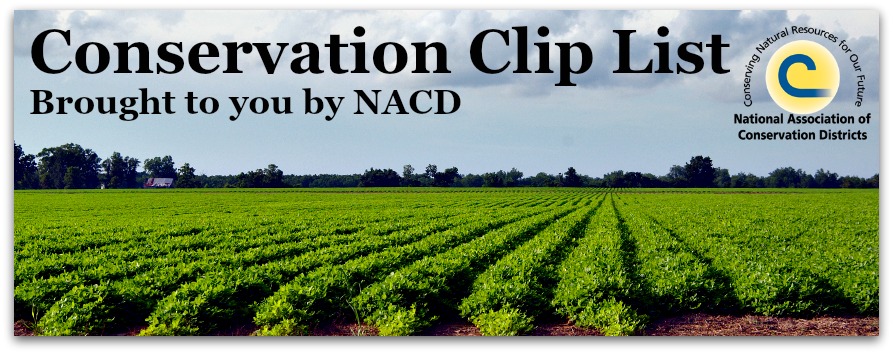
Conservation Clip List is a weekly collection of articles distributed by NACD that provides our members and partners with the latest news in what's driving conservation. If you have a relevant submission, please contact your NACD Communications Team.
Tom Gordon, of the state’s emergency task force, talks about the drought via Portland Press Herald
“Primarily what we are hearing about is dry wells or extremely low farm ponds, and that is affecting farmers’ ability to get water to their cattle and also to irrigate crops.” The worst problem? “The impact on the hay crop. Normally they wouldn’t irrigate, they’d just rely on the rain to take care of that.” But without rain, there’s been a serious problem with that second cut of hay, the one that everyone with livestock needs to get through the winter. The hay has “been either extremely poor or not even worth cutting.”
America’s Gray Ghosts: The Disappearing Caribou via The New York Times
Because they are so rarely seen, the caribou — America’s version of reindeer — are known as gray ghosts. They may very soon become real ghosts: These animals are among the most endangered species in the lower 48 states.
Bees were just added to the U.S. endangered-species list for the first time via The Washington Post
For the first time in the United States, bees have been placed on the endangered-species list. The U.S. Fish and Wildlife Service on Friday determined that seven species of yellow-faced bees, all native to Hawaii, should be protected under the Endangered Species Act.
Remarks by the First Lady at the White House Kitchen Garden Dedication via The White House
First Lady Michelle Obama highlighted the recent improvements to the White House Kitchen Garden, saying, “We have the first-ever White House compost system to highlight the importance of having healthy soil. That's back there. It’s going -- it’s blazing, our composting. We planted the first-ever pollinator garden to provide a home for our birds and butterflies and our bees.”
Arctic Pollinator Faces Uncertain Future via Scientific American
A 2013 study found that the Arctic flowering season is shortening. The numbers of fly pollinators is down, as is the the number of visits by these fly pollinators. Which could be bad for mountain avens—and beyond. "One could expect that also the other pollinators and flower visitors visiting the mountain avens could get more uncommon and even become extinct in the long run."
United Tribes aims to draw students to environmental science via The Bismarck Tribune
Students in the master's program conduct more in-depth research projects, and two students have worked on water quality — one was looking at mercury content in the sediment in rivers near the Standing Rock Reservation, the other analyzing lead content of sediments in some of the rivers.
Out of the ashes comes a silver lining via The Wichita Eagle
Controlled burning, proponents argue, is the only way to rid the prairie of cedar trees and other fuel and prevent another major wildfire. “Prairie needs fire almost as much as it needs water if it’s going to stay healthy,” Ted Alexander said.
As cities get warmer, their trees lose some of their ability to take carbon out of the atmosphere via Los Angeles Times
A recent study found that the total amount of carbon stored in urban trees in the U.S. is 643 million tons and that city trees suck up an additional 25.6 million tons of carbon from the atmosphere each year. But their ability to perform this critical work may soon be hampered. New research suggests that as the planet and its cities get warmer, the ability of urban trees to take carbon out of the atmosphere is diminished.
The EPA gets closer to cleaning up one of the nation’s most polluted rivers via The Washington Post
This spring, the EPA finalized a $1.4 billion, 10-year plan to remove industrial toxins that have built up for more than a century along the Passaic’s lower eight miles. That stretch would be dredged from bank to bank, with more than 3.5 million cubic yards of contaminated sediment removed and a two-foot-thick sand and stone barrier laid to “cap” the river bottom. The contaminated sediment eventually would be shipped to a licensed disposal site out of the state.